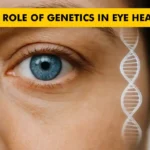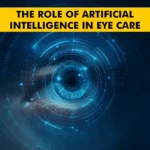When we talk about the diseases from which we humans can suffer, eye diseases are one of the most prominent ones. Would it be wrong to say that our eyes are one of the most sensitive organs in our body? Of course not, and that is why it is prescribed to take special care of the eyes.
We hope you are aware of the fact that there are numerous eye diseases or problems that one can suffer from. Some diseases might have various causes, while the reasons for some are unknown. In both cases, we should never ignore any eye condition so that it doesn’t become a severe problem. While discussing eye problems, how can we forget Strabismus and Squint? Well, many people get confused when it comes to Strabismus vs. squint, which is why we will discuss both today.
Squint Eye: What Is It?
Squint is one of the most prevalent eye conditions seen worldwide. Precisely, you can say that the squint eye is like a misalignment of the two eyes. The synchronization between the two eyes, which is required for proper binocular vision, is impacted by this eye problem.
By focusing our eyes on the same thing at once, which centers our eyes, six muscles in each eye sustain such synchronisation. However, when you suffer from a squint eye, one or more of these muscles of your eyes don’t function, causing both eyes to be focused on different directions. In this case, either one or both of your eyes may be off-centre, or one may be straight while the other sees somewhere else.
When both eyes simultaneously focus on the same thing, they see the same image. Squinting, however, causes both eyes to focus in different directions, which causes them to see distinct images, and the brain interprets these distinct images. Once this happens, it may result in various problems, such as amblyopia, double vision, or visual fuzziness. Strabismus is another name for squint disorder.
Amblyopia: What Does That Mean?
As we are talking about amblyopia vs. Strabismus, let us first make you familiar with some other names for Strabismus. You should remember that squint and Strabismus are two different names for the same eye disease. Amblyopia, also called lazy eye, on the other hand is different and is one of the problems that people suffering from squint might suffer from.
Amblyopia is developed when your eyes’ visual pathway doesn’t develop normally in one eye since that eye cannot convey a clear image to your brain. Even when a kid is using the proper glasses, this results in blurry vision in that eye. Amblyopic eyes or lazy eyes are terms used to describe eyes that have amblyopia. When the brain is not using the vision in the turned eye, a youngster with squint may develop amblyopia in that eye.
Even though some kids may have amblyopia, they might not suffer from squint. This could be mainly because one or both of their eyes might have hypermetropia or myopia.
Amblyopia may cause this eye’s vision to decline permanently. There are several treatments for amblyopia, and they work best when started before the age of 7 when eyesight is still growing. Squints and amblyopia should be identified early on and cured because, regrettably, amblyopia cannot be easily corrected in later years.
Squint Vs Lazy Eye: How Are They Diagnosed?
Now that you know about squint vs. lazy eye let us know about their diagnosis process. In order to diagnose a squint in your child, it is essential to consult an orthoptist. Your child’s squint may occasionally be diagnosed and treated by an optometrist.
The optometrist might ask your kid to identify or pair letters, images, or patterns in order to determine how well they can see. They will observe your kid’s eye movements, which may require concealing and exposing each eye in sequence to determine if a squint is prevalent.
Eye drops are typically also used during the squint diagnosis. To ensure that the prescription for your kid’s glasses is as precise as possible, eye drops are given to relax the focus of their eyes.
Lazy Eye Vs. Squint
The goals of treatment for a kid’s squint are to ensure that each eye’s eyesight normally improves, prevent lazy eyes, and support the development of binocular and 3D vision as much as feasible. Always remember that the treatment must begin before the age of 7 as the visual pathway is not fully developed at that time.
Most squint treatments are chronic and typically need several years of consistent visits and eye exams at the hospital or an eye clinic. However, the treatment might vary from person to person. Some of the most common ones include:
- Eye surgery
- Spectacles
- Botulinum toxin injections
- Occlusion therapy
- Various eye exercises
Why Choose Centre For Sight?
It is obvious that no matter which type of health problem we talk about, each one needs to get treated right before it becomes fatal. And the same is the case with lazy eye and squint, so you better get in touch with a reliable eye clinic, like Centre For Sight, to receive adequate treatment. We at CFS have experienced ophthalmologists to provide you with a positive experience. We make sure that you get the best treatment and feel at ease.
Article: Strabismus Vs. Squint: How Are They Different From Each Other?
Author: CFS Editorial Team | Aug 30 2022 | UPDATED 06:37 IST
*The views expressed here are solely those of the author in his private capacity and do not in any way represent the views of Centre for Sight.





